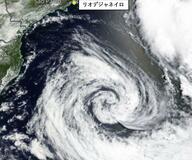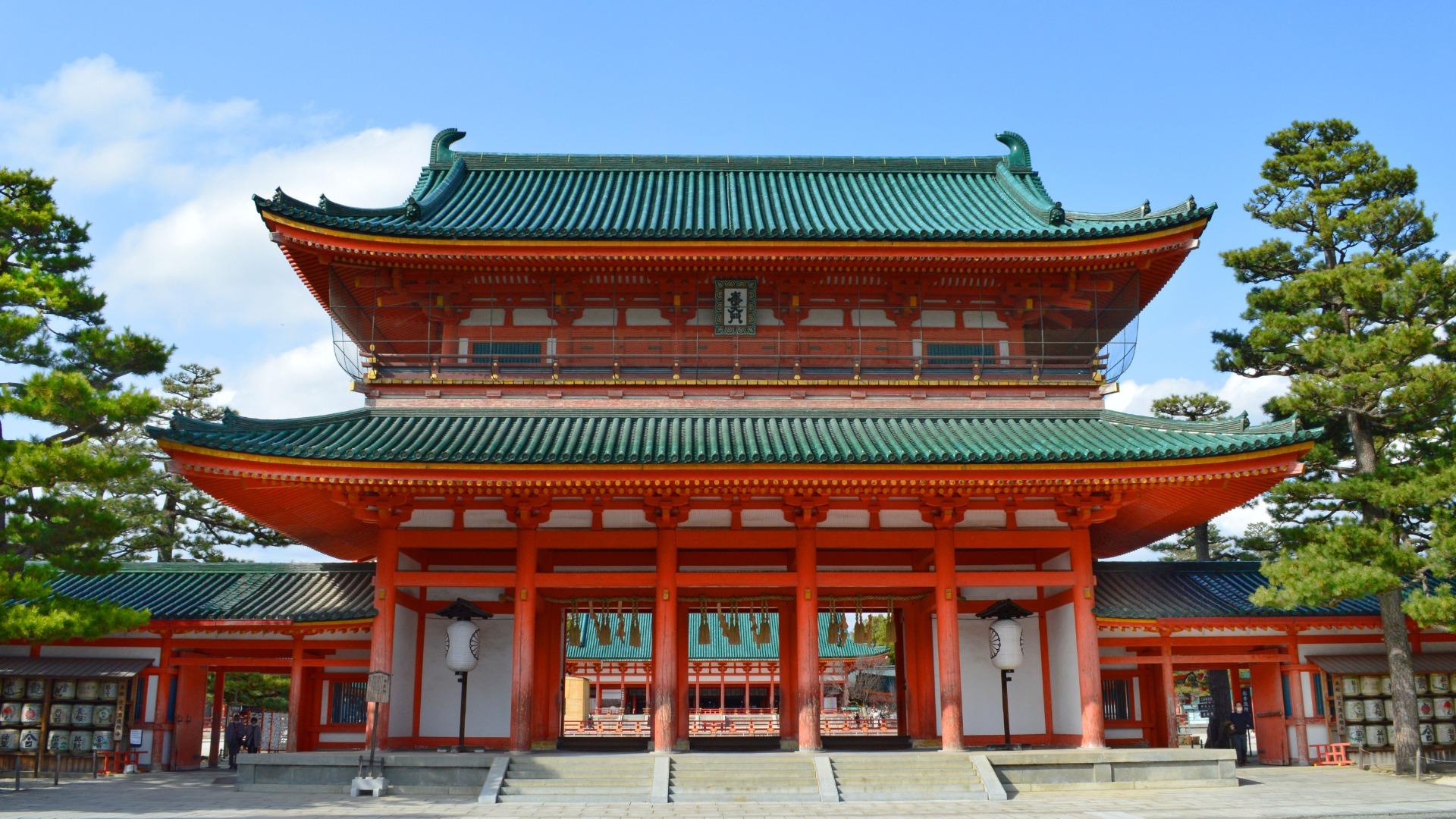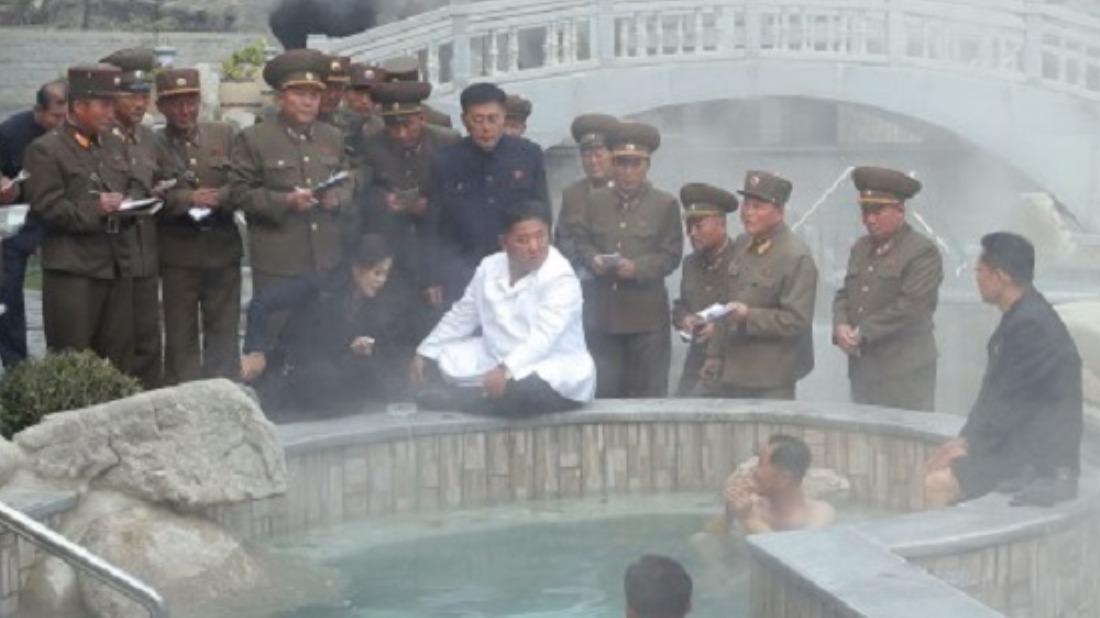Tokyo Has Earliest Cherry Blossom Season, but why?
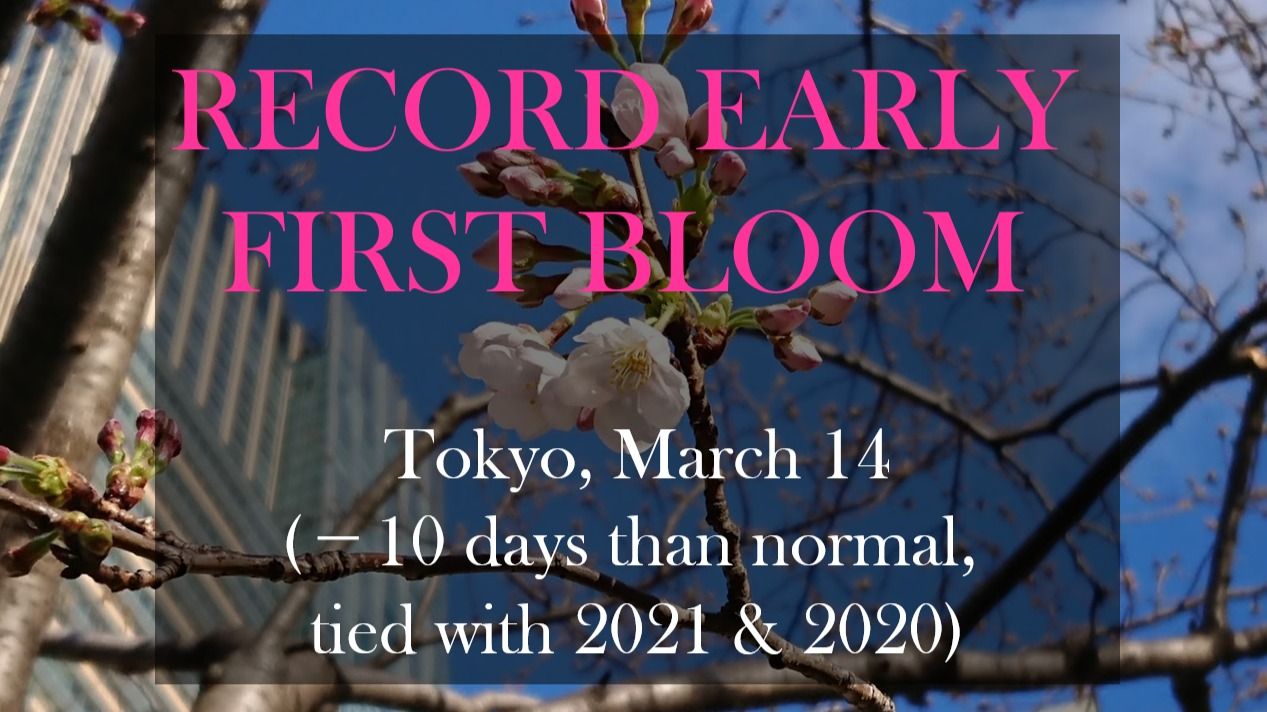
Tokyo has officially entered the cherry blossom season!
On Tuesday, March 14th, Tokyo's sakura began blooming, 10 days earlier than usual. This is the earliest recorded blooming in the city since observations started in 1953, and ties with 2021 and 2020.
The first bloom is determined when five or six flowers are counted on a benchmark tree. Tokyo’s benchmark tree is located in Yasukuni Shrine near the Imperial Palace.
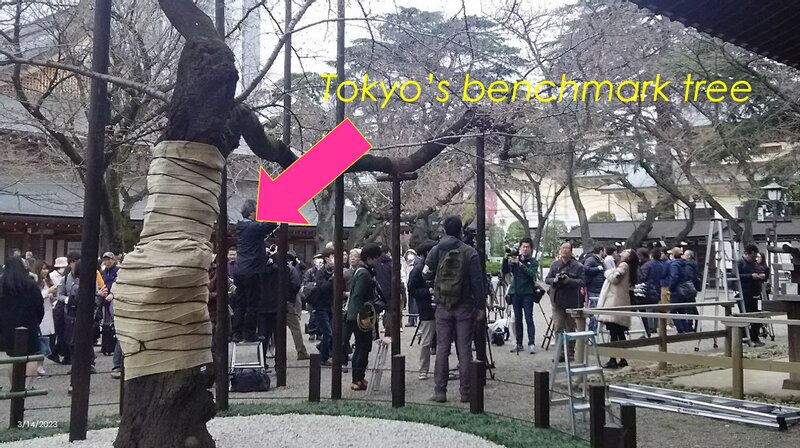
Full bloom forecast
Typically, cherry blossoms reach full bloom about a week after the first bloom. Full bloom is defined when over 80 percent of flowers on the benchmark tree are in bloom. A weather company predicts that the full bloom will occur on March 21, which would also be the earliest on record, tying with 2002.
With the official start of cherry blossom season, people are beginning to plan flower viewing, called "hanami" in Japanese. The weather seems to be cooperating for the fun events next week, with warm and sunny weather expected. However, there is a chance of a spring storm on Saturday.
Could the winds blow away the petals before they reach full bloom? Don’t worry. During the first 10 days after blooming, the flowers are firmly attached to the branches and do not fall off easily. It's after more than 10 days that the flowers start to fall like a blizzard.
Blooming Trend
Recently, the cherry blossom season arrives earlier compared to decades ago.
In Tokyo, the recent average date of the first bloom is seven days earlier than that of 50 years ago. The reason for the early blooming varies from climate change to the aging of the benchmark tree. Older trees tend to bloom earlier as they do not use nutrients for leaves or branches like younger ones.
Cherry blossoms in the future
So, will cherry blossoms start to bloom earlier in the future? Not always. Cherry blossoms need not only warmth in spring but also coldness in winter to open. The mechanism of blooming is that cherry blossoms produce flower buds in summer, and the buds go dormant in early winter. Then, they wake up from dormancy due to the coldness of winter (called "dormancy-breaking"), grow toward spring, and bloom.
This year's exceptionally early blooming in Tokyo was brought about by a colder winter followed by a significantly warm March.
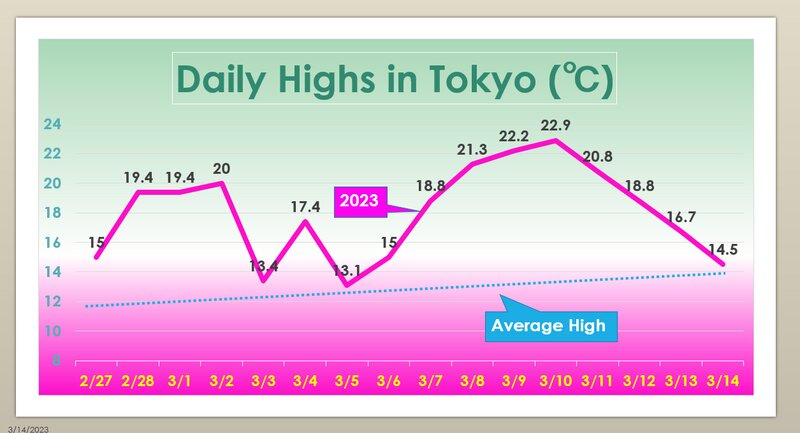
If only there were no cherry blossoms...
If the weather keeps warming up, some cherry blossoms may not experience the cold weather necessary for breaking dormancy. If that happens, the cycle of cherry blossoms might be confused. The first bloom might be delayed, or it may not even reach full bloom.
An ancient poet named Ariwara no Narihira composed the following verse:
"Ah, if only there were no cherry blossoms in this world, how peaceful our hearts would be in spring."
During this time of year when cherry blossoms bloom, the hearts of the Japanese people are constantly aroused.





